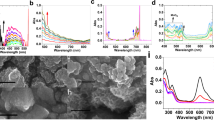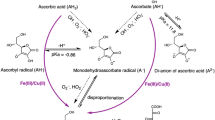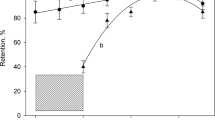Abstract
THE platinum potential of solutions containing biological oxidation-reduction agents can be measured when exposed to air by means of a relatively simple technique1.
This is a preview of subscription content, access via your institution
Access options
Subscribe to this journal
Receive 51 print issues and online access
$199.00 per year
only $3.90 per issue
Buy this article
- Purchase on Springer Link
- Instant access to full article PDF
Prices may be subject to local taxes which are calculated during checkout
Similar content being viewed by others
References
Bezssonoff, N., and Woloszyn, M., Bull. Soc. Chim. Biol., 21, 208 (1939).
Bezssonoff and Woloszyn, loc. cit. The pH stability of the ascorbic acid solutions was ascertained by means of an antimony electrode system.
Heintz, C.R. Acad. Sci., 208, 1893 (1939).
Borsook, H., and Keighley, G., Proc. Nat. Acad. Sci., 19, 1875 (1933). Wurmser, R., Actual. Sci. et Indus., 244, 56 (1935). Ball, E., J. Biol. Chem., 118, 219 (1937).
According to the potentiometric measurements of Vles, Reiss and Deloyers, C.R. Soc. Biol, 108, 37 (1931). Outevskaya, Bull. Biol. et Med. Exper. U.R.S.S., 5, 226 (1938). Rafalkes, Tzoutzoul-kovskaya et Chneerson, Bull. Soc. et Med. Exper. U.R.S.S., 5, 191 (1938).
Author information
Authors and Affiliations
Rights and permissions
About this article
Cite this article
BEZSSONOFF, N., WOLOSZYN, M. Platinum Potential of Vitamin C Solutions in Contact with Molecular Oxygen. Nature 144, 289–290 (1939). https://doi.org/10.1038/144289a0
Issue Date:
DOI: https://doi.org/10.1038/144289a0
Comments
By submitting a comment you agree to abide by our Terms and Community Guidelines. If you find something abusive or that does not comply with our terms or guidelines please flag it as inappropriate.



